Have you ever stood in the supermarket aisle, looking at rows of detergent or snacks, trying to decide which one’s packaging and ingredients would do the least environmental damage if it landed in your shopping cart? Have you found yourself fretting over whether the conventionally grown tomato from your local farmer would be better for your children’s future than the organic one from half a world away? Spent endless hours calculating the benefits of keeping the old workhorse-but-power-sucking refrigerator you’ve got versus getting a new, more energy-efficient one?
 As environmentally concerned citizens, we’ve all experienced the uncertainty when it comes to making choices that best reflect our values of living in balance with the planet. Being born into modern civilization, almost all of our movements and transactions are tied into complex industrial processes in which each of us is but a tiny link at the end of long and often invisible chains of extraction, manufacturing, shipping, and distribution. In many ways, the same technological advances that have enabled us to escape from the confines of our immediate environment have also made it increasingly difficult to trace our very own footprints.
As environmentally concerned citizens, we’ve all experienced the uncertainty when it comes to making choices that best reflect our values of living in balance with the planet. Being born into modern civilization, almost all of our movements and transactions are tied into complex industrial processes in which each of us is but a tiny link at the end of long and often invisible chains of extraction, manufacturing, shipping, and distribution. In many ways, the same technological advances that have enabled us to escape from the confines of our immediate environment have also made it increasingly difficult to trace our very own footprints.
Understanding the true impact of our daily decisions to feed, clothe, and shelter ourselves thus requires an endless set of magnifying glasses spanning the entire globe. And yet, even if all the links in the industrial chain were transparent (which they aren’t), none of us individually would have the time to thoroughly assess every single thing we come in contact with. For example, just trying to figure out where in the world all the different parts that comprise the device you’re reading these lines on were sourced and how much energy, water, and labor it took to get it into your hands is like dissecting dark matter. Go ahead, give it a try!
Thankfully, there are rating systems that do some of the work for us. The EPA’s popular Energy Star label, for example, identifies and promotes energy–efficient products, helping us to better facilitate the above-mentioned refrigerator conundrum. The USDA Organic Seal guarantees food free from pesticides and antibiotics, and has become a leading global standard. LEED, or Leadership in Energy & Environmental Design, is a certification program that recognizes best practices in green building and architecture.


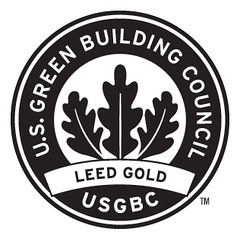

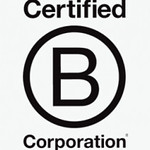
But how do we move beyond viewing our relationship with the material world and with each other through isolated, microscopic lenses? How do we account for more complex systems and mechanisms that comprise a whole range of processes in which any single object and activity is but a tiny and temporary snapshot of a much larger and constantly evolving landscape?
Well, there are some standards out there that account for more dynamic processes and entities: Cradle to Cradle, for example, assesses the entire life cycle of a product, from source to sink, including material health, recyclability, energy and water use, and even social impact. B Corp certification verifies the impact of a company in areas of governance, workers, community, the environment, as well as the product or service the company provides. However, there are millions if not billions of products and companies in the world, and to get enough of them to sign on to a standardized ratings system to have a global impact would seem to be a near insurmountable task.
What then would be an entity large enough in impact, small enough in units to account for, yet diverse enough by nature to reflect the totality of human activity?
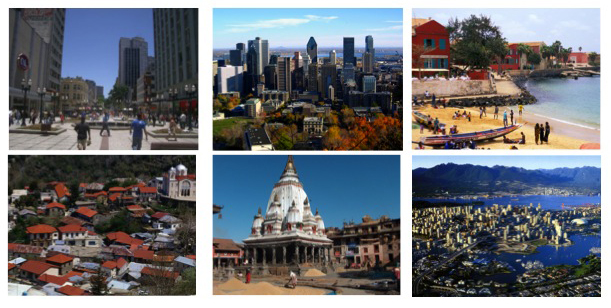
Understanding the complex city organism
Cities are the biggest things that humans build. They accommodate two out of every three people on the planet (and rapidly growing) and generate the majority of the world’s waste, pollution, and greenhouse gases. They constitute sample sizes big enough to be on a bioregional scale, but at the same time they are human-made organisms with physical and political boundaries, thus providing the tangible container needed in order to be measured. Really, if we could get an accurate accounting of everything that flows into and out of the world’s cities, it would give us an honest assessment of large-scale ecological imbalances affecting the planet, and thus the tools to make meaningful changes.
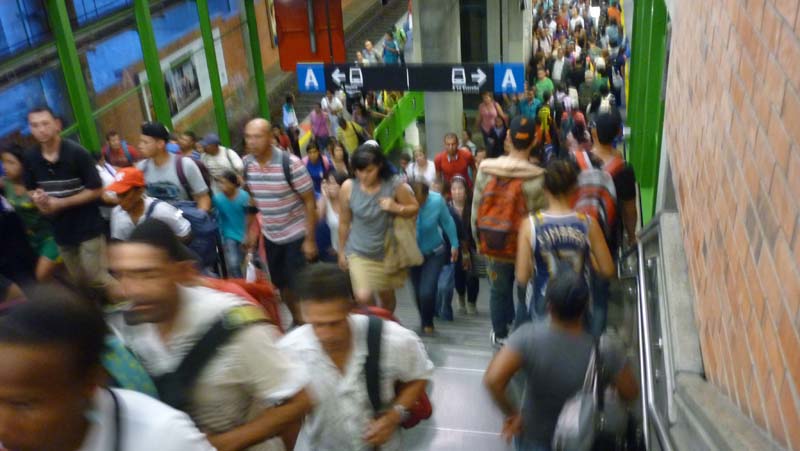 Luckily, a growing number of people and institutions have recognized this need for understanding cities on a deeper level and the tremendous opportunities in addressing humanity’s most pressing problems by doing so. There are already great efforts underway that seek to assemble the building blocks for assessing different elements of the urban ecosystem.
Luckily, a growing number of people and institutions have recognized this need for understanding cities on a deeper level and the tremendous opportunities in addressing humanity’s most pressing problems by doing so. There are already great efforts underway that seek to assemble the building blocks for assessing different elements of the urban ecosystem.
For example, the Global Protocol for Community-Scale Greenhouse Gas Emission Inventories (GPC) provides a framework for accounting and reporting city-wide greenhouse gas emissions. The Living Building and Community Challenge provides a framework for design, construction and the symbiotic relationship between people and all aspects of the built environment. City Protocol seeks to define a common systems view to allow cities to communicate and operate across silos and across communities. Ecological Footprint accounts allow governments to track a city or region’s demand on natural capital, and to compare this demand with the amount of natural capital actually available. And the United Nation’s Sustainable Development Goals, a proposed set of targets written to establish an inclusive and transparent intergovernmental process on a countrywide basis, are very much applicable on a city scale.
However, the most comprehensive city-specific framework I know of is the International Ecocity Framework & Standards (IEFS).
A framework for an ecologically healthy city
Based around the ecocity concept that views cities and human settlements as living organisms intrinsically linked to the health of the larger ecosystems and bioregions within which they reside, the IEFS enables participating cities to assess their overall ecological condition while also providing support to successfully move toward becoming ecocities. Designed for a wide range of users, the framework charts a city’s steps forward along 15 conditions, with corresponding verifiable indicators, organized through four fundamental urban arenas: urban design, bio-geo-physical conditions, ecological imperatives, and socio-cultural conditions.
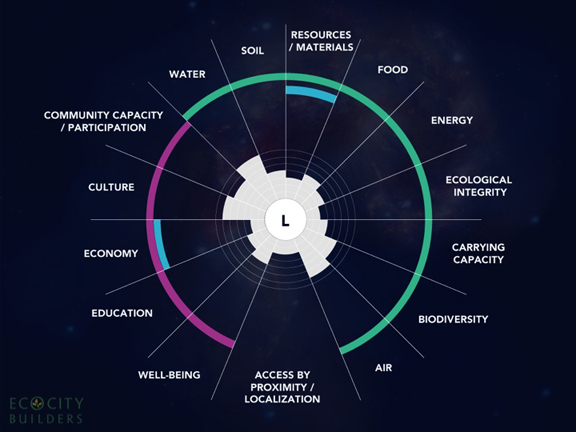
Here are the 15 conditions that address the full range of a healthy human civilization operating within the earth’s biocapacity:
- Access by Proximity
The city provides residents with walkable access between safe and affordable housing, basic urban services, and open/green space. It demonstrates environmentally friendly transport options and provides walking and transit access to close-by employment. - Clean and Safe Water
Residents have sufficient and continuous access to convenient and affordable clean drinking-water and domestic use water; city water sources, waterways and waterbodies are healthy and function without negative impact to ecosystems. - Clean Air
The city maintains a level of air quality that is conducive to good health within buildings, the city’s air shed, and atmosphere. - Healthy Soil
Soils functions and operations meet their ranges of healthy ecosystem functions as appropriate to their types and environments; fertility is maintained or improved. - Responsible Resources/ Materials
Non-food and non-energy renewable and non-renewable resources are sourced, allocated, managed and recycled responsibly and equitably, and without adversely affecting human health or the resilience of ecosystems. - Clean and Renewable Energy
Energy is provided for, and extracted, generated and consumed without significant negative impact to ecosystems or to short or longterm human health and does not exacerbate climate change. - Healthy and Accessible Food
Sufficient amounts of healthy and nutritious food are accessible to all and are grown, manufactured, distributed and recycled by processes which maintain the healthy function of ecosystems and do not exacerbate climate change. - Healthy Culture
Cultural activities that strengthen eco-literacy, patterns of human knowledge and creative expression are facilitated, symbolic thought and social learning is developed. - Community Capacity / Governance
Full and equitable community participation is supported in decision making processes along with legal, physical and organizational support for neighborhoods, community organizations, institutions and agencies to enhance their capacities. - Healthy and Equitable Economy
The city’s economy consistently favors economic activities that reduce harm and positively benefit the environment and human health and support a high level of local and equitable employment options. - Lifelong Education
Residents have access to lifelong education including access to information about history of place, culture, ecology, and tradition provided through formal and informal education, vocational training and other social institutions. - Well Being/Quality of Life
Residents report satisfaction with their quality of life including employment, the built, natural and landscaped environment, physical and mental health, education, safety, recreation and leisure, and social belonging. - Healthy Biodiversity
Biodiversity of local, bioregional and global ecosystems is sustained, including species diversity, ecosystem diversity and genetic diversity; natural habitat and biodiversity is restored. - Earth’s Carrying Capacity
Demands on ecosystems are within the limits of the Earth’s bio-capacity, resources are converted restoratively and support regional ecological integrity. - Ecological Integrity
Essential linkages within and between ecosystems are maintained and provide contiguous habitat areas and ecological corridors.
As you can see, this framework addresses a wide range of important measures, making sure that all areas that constitute a complete urban organism are covered. Charted from “unhealthy” through multiple levels of “Greener City,” “Ecocity”, and “Gaia” (whole earth level) along each of the 15 conditions, a city will only reach Ecocity status when it achieves an “Ecocity” or higher designation in all categories.
The beauty of this framework is that it can incorporate existing and proven rating systems as indicators for its various categories. For example, the EPA’s Air Quality Index (AQI) may indicate the level of progress a city has made in the Air category. The Genuine Progress Indicator (GPI) offers a nuanced and comprehensive assessment of Well Being/Quality of Life. And the aforementioned Ecological Footprint account serves as an excellent tool to track how close (or far) a city is from being within Earth’s Carrying Capacity.
Informed and guided by the Ecocity Framework, cities and citizens can move toward greater urban ecosystem health and sustainability by working at various levels from neighborhood to region — developing ecocity zoning and redevelopment plans to reshape cities towards greater energy and land efficient mixed-use centers, designing neighborhoods for improved form and function, creating specific action plans, or grappling with city, regional or country-wide programs that address broader policy and structural (i.e. educational, economic) impediments to creating Ecocities.
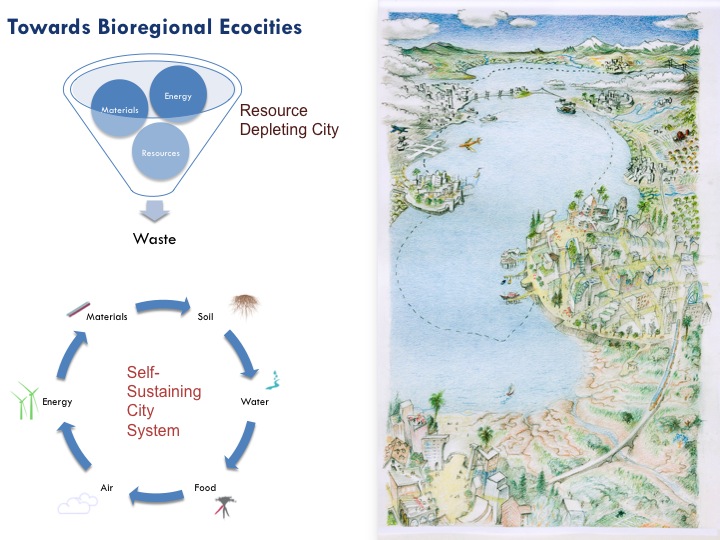
Needless to say, there currently aren’t any cities on the planet that have reached “Ecocity” level in all 15 categories, which is why we’re dealing with such global issues as climate change, resource depletion, and loss of biodiversity in the first place. Cities in developing countries most commonly struggle in the Water or Education departments, while most cities in the developed world fall short with their Access by Proximity scores and overshoot the Earth’s Carrying Capacity by a mile and a half.
However, the fact that nobody really is “winning” at this point actually works in the framework’s favor, as the spirit of the IEFS is not to pit cities against one another but to exchange knowledge and lift each other up. Integrating such a wide range of indices not only helps to paint a more holistic picture of a city’s overall ecological condition, but it fosters the cross-border, -cultural, and -disciplinary collaboration needed to build the kind of global network of cities that help each other reach what must be humanity’s ultimate common goal: to sustain a healthy, happy, and equitable life for all residents on this little round ball we share.
- This article was originally published in Mother Earth News.
- Photos: Ecocity Builders & Sven Eberlein. Charts: Ecocity Builders.
- Sven has been in an advisory role with the IEFS since its launch in 2010. The framework is predicated on over 30 years of concept development, research and practice by some of the world’s leading experts and practitioners in the ecocity arena. Sven’s organization, UN-accredited nonprofit Ecocity Builders has been guiding the process of gradual refinement in conjunction with its lead academic partner, the British Columbia Institute of Technology (BCIT) School of Construction and the Environment.
- For more info about the Ecocity Framework, check out the IEFS brochure.
- To learn more about the BCIT School of Construction and the Environment‘s Living IEFS Lab’s goal to achieve a 75% reduction in energy and materials consumption in its educational program delivery, visit their Factor Four Initiative.


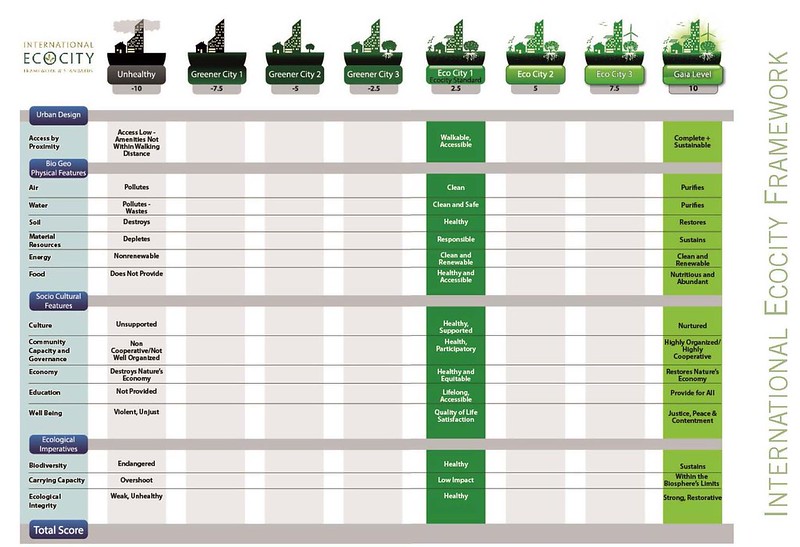




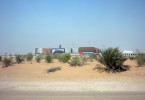
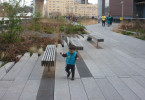
Remarkable and well written. You’ve taken me from the place where I’m at (full of doubt) to the place where I want to be (rejuvinated with positive action). It must be very exciting to be a part of the Ecocity development process, and I thank you for all the work you’ve done, including communicating the idea(s) to masses.
While reading, I kept seeing a future where the cities are far healthier than the rural areas. They become more desirable places to live, thus people move back. The rural areas, in turn, begin to heal from their surburbanized injuries, thus nature is freed.
The Pope is coming to Philadelphia (an hour from me) this fall. He’s in the headlines today for his position on climate change. I hope he reads your article. Let all his followers hear and be empowered by this great idea. Let all of us, of every spirit, unite to paint this satisfying picture.
Thanks so much, Ruth. Really happy to hear this made sense, that’s the biggest compliment I can think of for this type of post. I love this:
That is very much the bioregional thinking this whole framework is trying to address. The fact is, neither cities nor rural areas are isolated entities, and the more we can think interms of the relationship between them, the more closely it’ll resemble nature’s “thinking.”
Haha, that would be fantastic if Francis read my article. It wouldn’t surprise me if he did, as he’s obviously a deep thinker. I’m still trying to get through HIS 183 pages. 🙂
A superb article. Every time I read about this project I garner a little deeper understanding. I also get a little more optimistic that great minds are starting to connect the dots in meaningful and actionable ways.
What disturbs me is the time it is taking to peel the layers of the onion off the complex ball of interactions and charting all the connections. Sort of like mapping DNA.
And then there is the problem, which I view as the main one, when it comes to us solving our problematic relationship with the planet we live on – our ego. That is the wild card which defies total understanding and mapping.
Thank you so much, JC. It really is like mapping DNA, what a great analogy! Obviously, not everyone is going to go through the trouble of doing all that work, but it’s certainly beneficial that some of us are pushing it forward.
The Ego is certainly a wonderfully complex entity. It often gets a bad rap, to the point of where you say that someone has an Ego it’s automatically negative. The fact is we all have and need an Ego, and it can be such a beautiful thing if navigated right. I think the Buddhists are closest to successful Ego management: By becoming conscious of our own Ego and how it works in certain situations we are best able to use it in beneficial ways. An Ego with no awareness of itself, on the other hand, is the most horrifying weapon humankind has been known to wield.